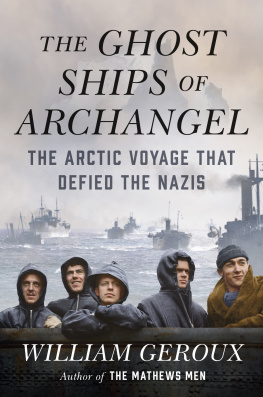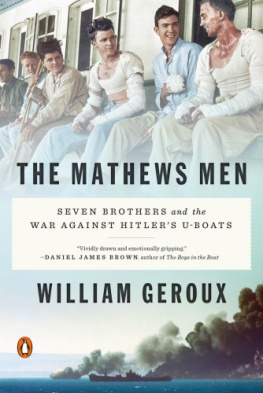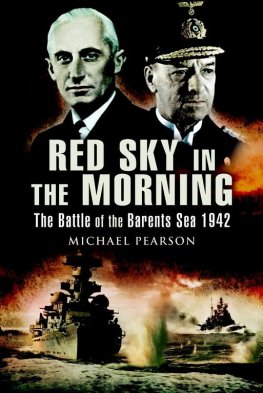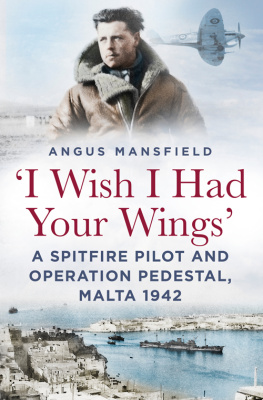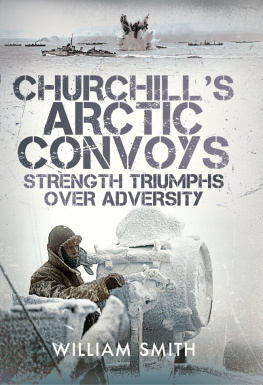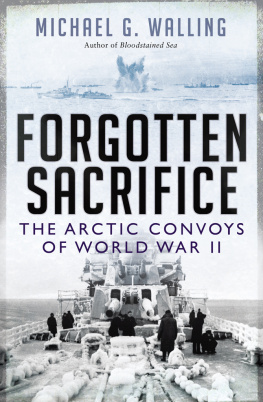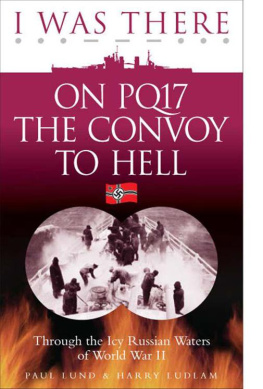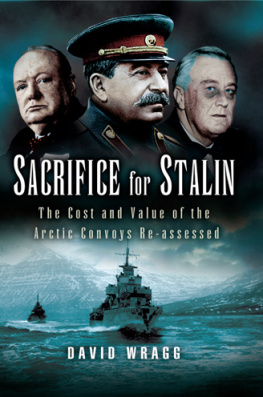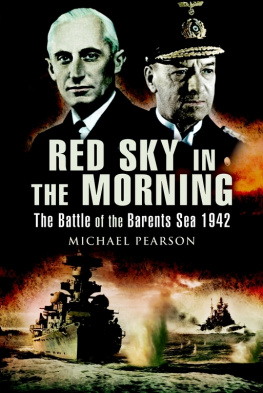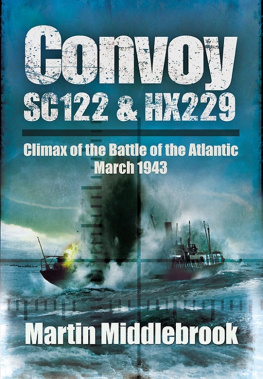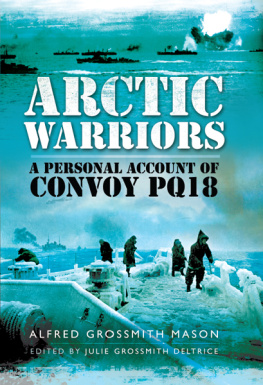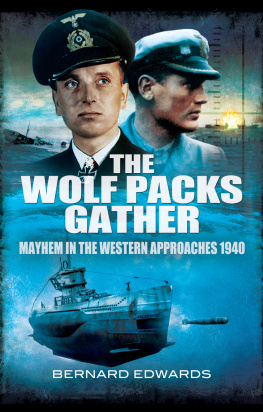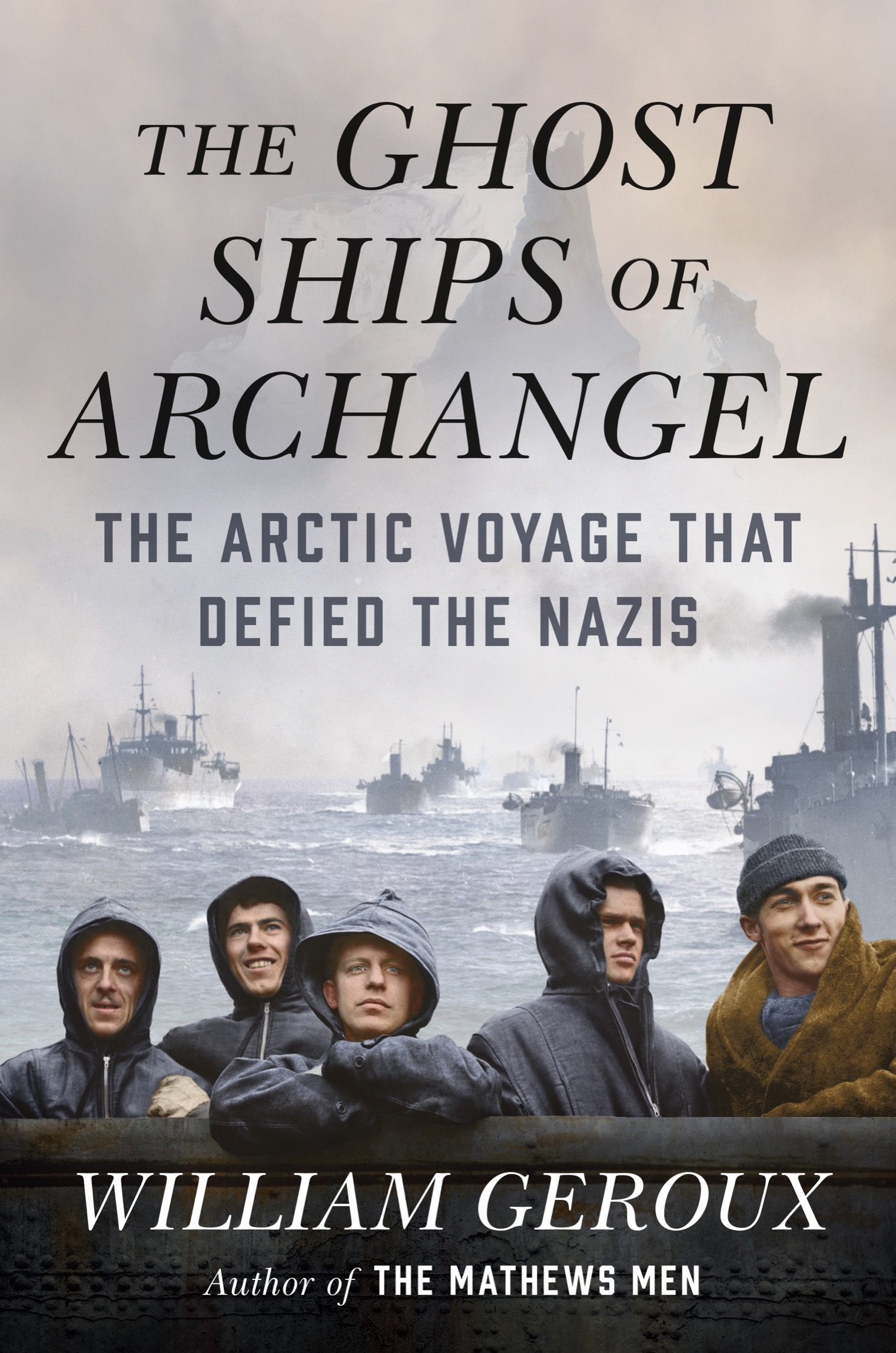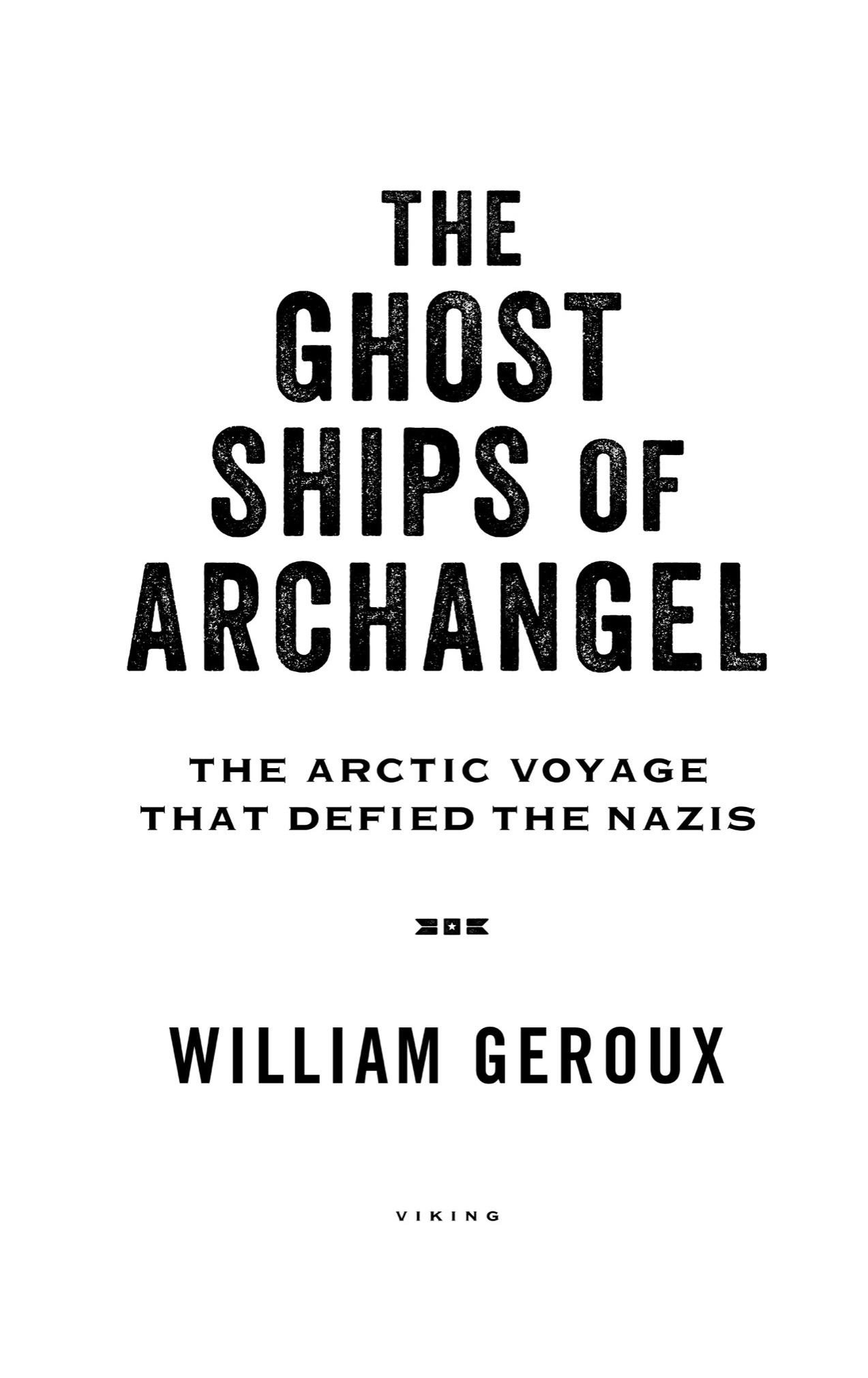A LSO BY W ILLIAM G EROUX
The Mathews Men: Seven Brothers and the War Against Hitlers U-boats
VIKING
An imprint of Penguin Random House LLC
penguinrandomhouse.com
Copyright 2019 by William Geroux
Penguin supports copyright. Copyright fuels creativity, encourages diverse voices, promotes free speech, and creates a vibrant culture. Thank you for buying an authorized edition of this book and for complying with copyright laws by not reproducing, scanning, or distributing any part of it in any form without permission. You are supporting writers and allowing Penguin to continue to publish books for every reader.
Illustration credits appear on .
LIBRARY OF CONGRESS CATALOGING-I N-PUBLICATION DATA
Names: Geroux, William, author.
Title: The ghost ships of Archangel : the Arctic voyage that defied the Nazis / William Geroux.
Description: New York, New York : Viking, [2019] | Includes bibliographical references and index. |
Identifiers: LCCN 2018049389 (print) | LCCN 2018055894 (ebook) | ISBN 9780525557470 (ebook) | ISBN 9780525557463 (hardcover)
Subjects: LCSH: World War, 19391945Naval operations. | World War, 19391945Arctic Ocean. | Naval convoysHistory20th century.
Classification: LCC D771 (ebook) | LCC D771 . G436 2019 (print) | DDC 940.54/50916324dc23
LC record available at https://lccn.loc.gov/2018049389
MA PS BY JEFFREY L . WARD
While the author has made every effort to provide accurate internet addresses and other contact information at the time of publication, neither the publisher nor the author assumes any responsibility for errors or for changes that occur after publication. Further, the publisher does not have any control over and does not assume any responsibility for author or third-party websites or their content.
Cover design: Matt Vee
Cover images: (top to bottom) iceberg, Mike Hill / Getty Images; ships, Imperial War Museum (HU 3349); Trinity Mirror / Mirrorpix / Alamy Stock Photo
Photographic illustration: Steve Gardner / PixelWorks Studios
Version_1
For Kema, Sarah, Nick, and Cody
Death barred the way to Russia, but you crosst.
J OHN M ASEFIELD , For All Seafarers
CONTENTS
MAPS
. Convoy PQ-17 in Formation, JULY 12, 1942
. Convoy PQ-17 Before the Scatter Order, JUNE 27 JULY 4, 1942
. The Fate of Convoy PQ-17, JULY 428, 1942
PROLOGUE
THE SPINNING NEEDLE
Jim North could not tell exactly what was happening, but in the pit of his stomach he knew the fate of convoy PQ-17 had taken a calamitous turn. All around him, the thirty merchant ships in the convoy were veering off in different directions through the icy Arctic waters, abandoning the tight defensive formation that had kept the German bombers and U-boats at bay since the convoy left Iceland a week before. Every ships signal lanterns blinked messages nonstop. On the bridge of Norths vessel, the freighter Troubadour, the Norwegian captain and the first officer held a terse discussion in their native tongue, punctuated by vile curses. North understood only the curses, but there was no mistaking the tone of their voices. A fresh crisis had overtaken convoy PQ-17 on its misbegotten voyage to Arctic Russia.
It was the Fourth of July 1942, a little past 9:30 p.m., although the time of day meant nothing to the men on the ships because the Arctic sun never set in July. The convoy was less than 800 miles from the North Pole. Earlier in the day, the American vessels forming the core of the convoy had celebrated Independence Day by hoisting brand-new U.S. flags into the fog and scudding clouds. Soon afterward, the Allied warships protecting the convoy had fought off an attack by twenty-three German dive-bombers. Three ships had been sunk but the mariners considered the battle a victory, an encouraging sign that they might yet reach the Soviet Union alive. Some of the men were still congratulating one another when the new crisiswhatever it wasengulfed them.
North was still trying to figure out what the Norwegians were saying when he was startled by the blare of another ships claxon. A small British escort vessel approached the Troubadour, and a British officer shouted through a bullhorn, repeating an extraordinary message that had been sent to all the ships by signal flags. Convoy PQ-17 was breaking up. The powerful warships protecting it were already racing away. The Troubadour and the other merchant shipsall of them hopelessly slow and packed with TNT and other explosive cargowere supposed to find their own way, alone and unprotected, across hundreds of miles of the remote Barents Sea to Russia.
The convoy already was surrounded by U-boats, which had shadowed it for hundreds of miles, probing for gaps in its defenses. Now there would be no defenses. The twenty-four-hour Arctic daylight offered no respite from the German bombers, more of which were certainly on the way. Worst of all, perhaps, convoy PQ-17 faced a possible attack by the German battleship Tirpitz, the worlds most formidable warship. The Tirpitz had guns that could hurl devastating shells for a distance of twenty-two milesfrom beyond the horizon. It could sink lesser ships like the Troubadour before they even saw it coming. Men on some Allied ships called the Tirpitz the Big Bad Wolf.
Sorry to leave you like this, the commander of a departing British destroyer shouted across the water to a friend on one of the merchant ships he was leaving behind. Looks like a bloody business. Good luck.
The scattering ships would need a great deal of luck, not only against the Germans but against the Arctic itself. The convoys route skirted the edge of the polar ice field extending down from the North Pole. The water was full of icebergs and floes with razor-sharp edges. Though it was midsummer, the ocean was still cold enough to kill a person in minutes, and the air temperature often dipped below zero degrees Fahrenheit. Clouds and fog could persist for days, leaving navigators unable to fix their ships positions by the sun. The nearness of the Magnetic North Pole rendered vessels magnetic compasses useless.
At twenty, Jim North was the youngest and greenest deckhand on the Troubadour. He had never been to sea before and knew little about the Soviet Union except that it was a big country fighting the Germans like we were. After the convoy had repelled the German dive-bombers, North had felt cocky, indestructible. Now, as he watched the convoy dissolve, he wrote, I was scared shitless.
THOUSANDS OF MILES AWAY in Washington, D.C., London, and Moscow, President Franklin D. Roosevelt, British prime minister Winston Churchill, and Soviet dictator Joseph Stalin were testing the limits of their fraught alliance against Adolf Hitler. The Soviet Union was fighting for its survival against Nazi Germany in a war of medieval savagery that already had claimed millions of livesfar more than America and Britain together would lose in the entire course of World War II. America and Britain were merely watching the slaughter from the sidelines. Stalin was furious. But Roosevelt and Churchill did not think their troops were ready yet to compete with German troops on the battlefield. For the time being, the only help they were willing to give Stalin was to send convoys of war supplies across the ocean to the reeling Red Army. Whether that was enough help to keep Stalin on the Allied side was in doubt. But Roosevelt and Churchill were determined to keep the convoys sailing.

